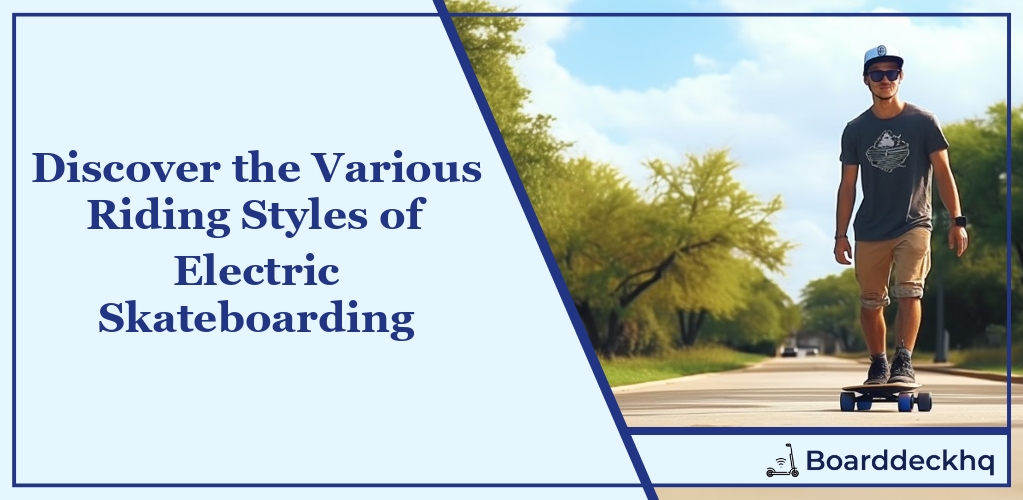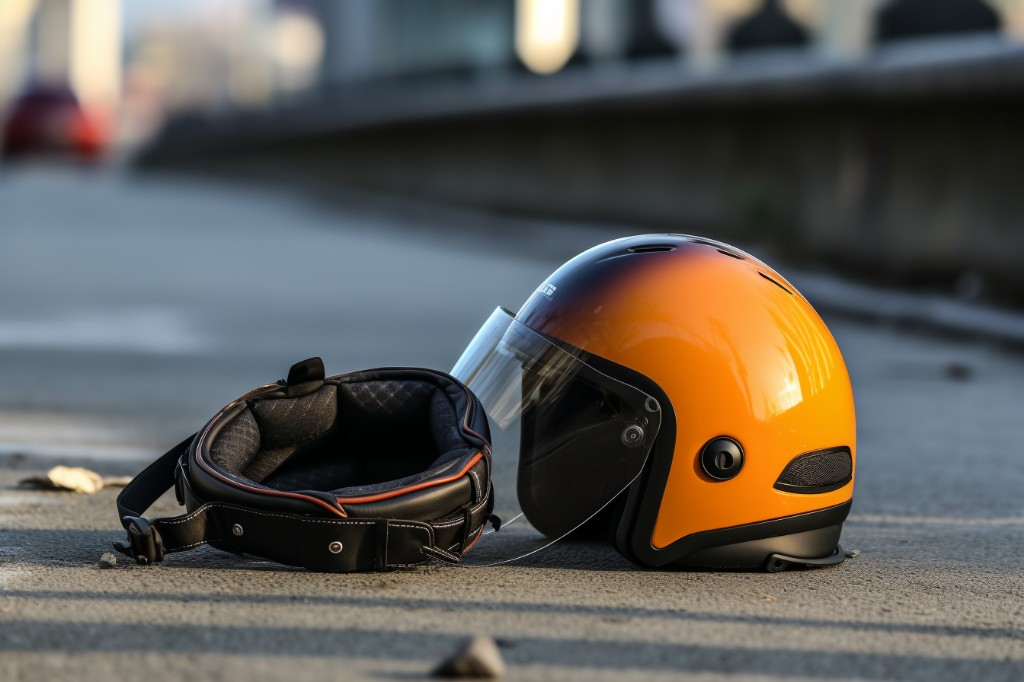In the exhilarating world of electric skateboarding, the thrill of the ride is matched only by the mastery of various styles and techniques. Whether you’re discovering your footedness or perfecting your posture, carving effortlessly or understanding the nuances of your electric skateboard’s settings, there’s a wealth of knowledge to equip yourself with for the ultimate ride. But it doesn’t stop there – knowing how to fall gracefully to minimize injuries and mastering the art of braking and turning are equally vital. And for those looking to push the envelope, uncovering advanced techniques can take your skateboarding to new heights. So, grab your helmet and let’s dive right into this rollercoaster ride!
What we’ll cover:
- Footedness Discovery
- Posture Perfection
- Carving Techniques
- Skateboard Types and Settings
- Stance & Foot Placement
- Braking and Turning Skills
- Minimizing Injuries
- Advanced Techniques
- Essential Gear
- Choosing Your Skateboard
Let’s jump in and convince you why electric skateboarding isn’t just a mode of transportation, but an art form in itself!
Discovering Your Footedness
Determining your footedness is a crucial initial step when learning to ride an electric skateboard. Now, you might be wondering, “What is this footedness we’re talking about?” Well, it’s simply about identifying which foot you’re more comfortable leading with on your skateboard.
Interestingly, there are two primary stances in skateboarding: the regular and the goofy stance. The regular stance involves leading with your left foot forward, while the goofy stance is just the opposite; you lead with your right foot. There’s no right or wrong here. It’s all about personal comfort and balance.
In moving forward, how can one determine their footedness? A simple trick involves sliding across a smooth floor in socks. The foot that goes forward first is likely your leading foot. Try leading with this foot on your skateboard and see how it feels.
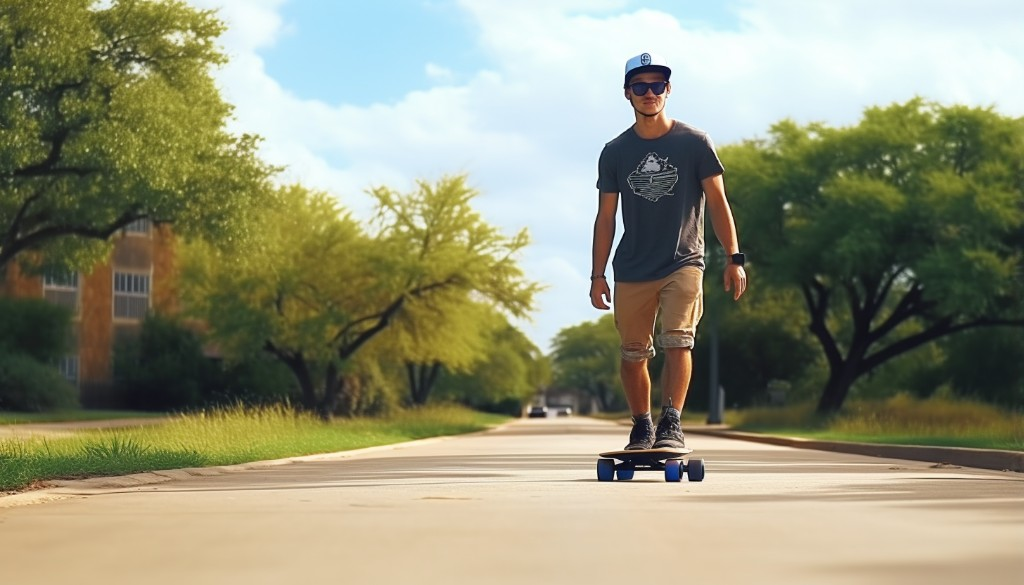
Perfecting Your Posture
Importance of Posture
Now that you have identified your footedness, it’s time to learn about the correct posture for riding an electric skateboard. Your posture plays a significant role in maintaining balance and control on the board.
How to Stand
Stand on your electric skateboard with your feet approximately shoulder-width apart. Position your front foot diagonally on the board while the rear foot should be closer to perpendicular to the board’s direction. This foot alignment provides stability and control while allowing for quick and easy movement.
Bend Your Knees
While standing on your electric skateboard, remember to bend your knees slightly. Bending your knees lowers your center of gravity and enhances stability. Plus, bending your knees allows for increased shock absorption from bumps and uneven surfaces, thereby making the ride smoother.
Bending your knees also provides flexibility in your movements and enhances your capacity to make quick, reactive moves when necessary. Therefore, not only does bending your knees make your ride smoother, but it also makes it safer.
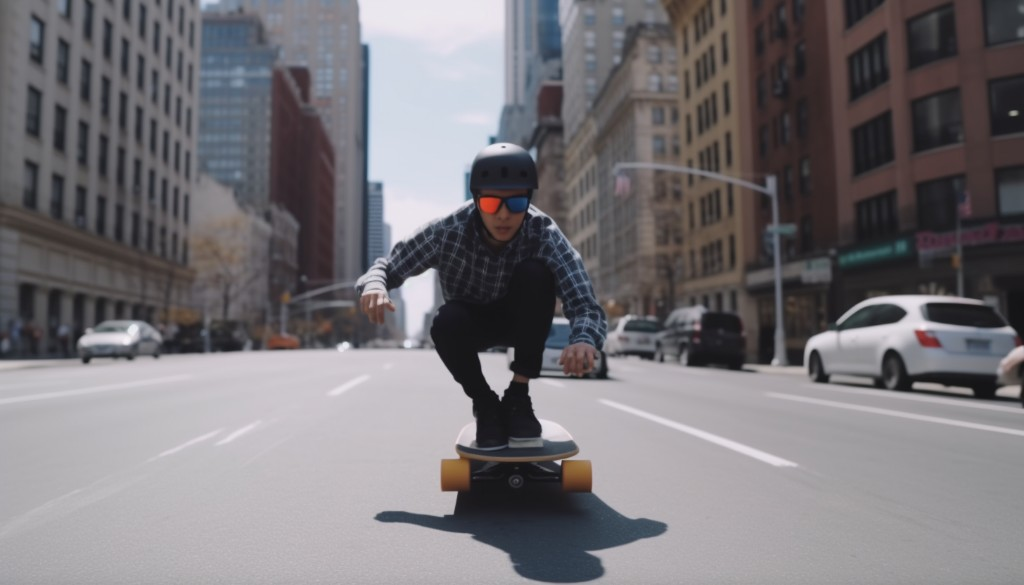
Composing Your Carve
Understanding Carving
Carving is an essential skill to master when you ride an electric skateboard. But what exactly is carving? It’s the art of making S-shaped curves while riding at a brisk speed. Think of carving like the zig-zag pattern a skier makes going down a slope.
How Carving Impacts Speed and Control
Carving has a significant impact on both speed and control when riding an electric skateboard. A well-executed carve can help reduce speed without applying the brakes, which can be especially useful when descending steep slopes.
Proper carving gives you greater control over your board’s movement and allows you to change direction smoothly and quickly. It’s an exhilarating aspect of skateboarding that adds a layer of fun and excitement to the ride.
Mastering Basic Carve Techniques
If you’re just starting out, begin with gradual and gentle carves before moving onto more dramatic ones. Lead with your shoulders, allow your hips to follow, and let your board respond naturally under your feet.
Remember to keep practicing; carving, like all aspects of riding an electric skateboard, requires practice to perfect. So get out there, put these techniques to use, and most importantly, have fun!

Understanding Electric Skateboard Types and Settings
With the advent of technology, skateboarding has evolved to incorporate electric motor systems, revolutionizing the sport entirely. Varied in their designs, features, and settings, electric skateboards offer an exciting array of options to meet diverse rider preferences.
The market is teeming with different types of electric skateboards. One popular type is the electric longboard, favored by many for its stability and speed. It’s an ideal choice for those who prefer a more relaxed ride or need to cover longer distances.
Next, there’s the belt drive electric skateboard. As the name suggests, this type operates with a belt-driven motor system. The belt drive setup allows for impressive torque, making it a reliable choice for riders who prefer uphill rides or need that extra push for steeper terrains.
Then there’s the hub motor skateboard, featuring motors integrated within the wheels. This type is valued for its smooth operation and relatively quiet performance, making it a hit among riders who prefer subtlety.
To optimize your ride, understanding the settings of these electric skateboards is crucial. From speed settings to brake sensitivity, the customization offered by electric skateboards enhances ride safety and experience.
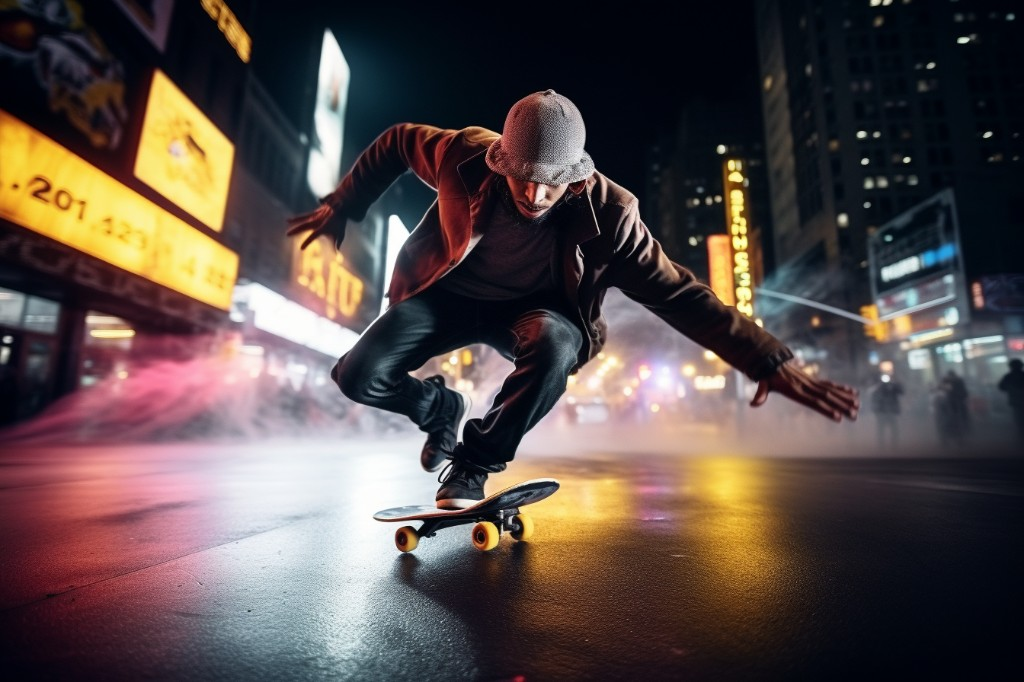
Your Skateboard Stance and Foot Placement
What’s the key to a comfortable and controlled ride on an electric skateboard? If you guessed stance and foot placement, you’re right on track! Proper stance and foot placement make all the difference when it comes to maintaining balance and control.
Your front foot position forms the foundation of your riding stance. Typically placed at a slight angle towards the front of the board, your front foot provides directional control. Remember that your front foot doesn’t just stay idle on the board; it’s actively guiding your movement.
Meanwhile, your back foot placement has a significant role in controlling acceleration and braking. Positioned perpendicular to the board length, it allows quick response in changing speed or stopping your electric skateboard.
In essence, mastering foot placement is key to ride an electric skateboard efficiently and safely.

Mastering the Art of Braking and Turning
Did you know that efficient braking and turning techniques can transform your riding experience on an electric skateboard? Let’s delve into how these techniques contribute to a smooth ride.
When it comes to braking, always remember that smoothness is key. Abrupt braking can lead to loss of control or even accidents. It’s crucial to gradually ease into the brakes and allow your skateboard to slow down gradually.
Turning on an electric skateboard involves shifting weight towards the desired direction. For instance, if you want to turn right, shift your weight towards the right until your board starts to steer in that same direction. Remember that your front foot plays a significant role in turning.
During turning maneuvers on an electric skateboard, keep a keen eye on your back wheels. They play a critical role in maintaining balance while turning at high speeds or on sharp corners.
Learning to ride an electric skateboard might feel daunting at first. But once you master these techniques, you’ll find yourself riding an electric skateboard with ease and confidence, ready to take on new paths and adventures.
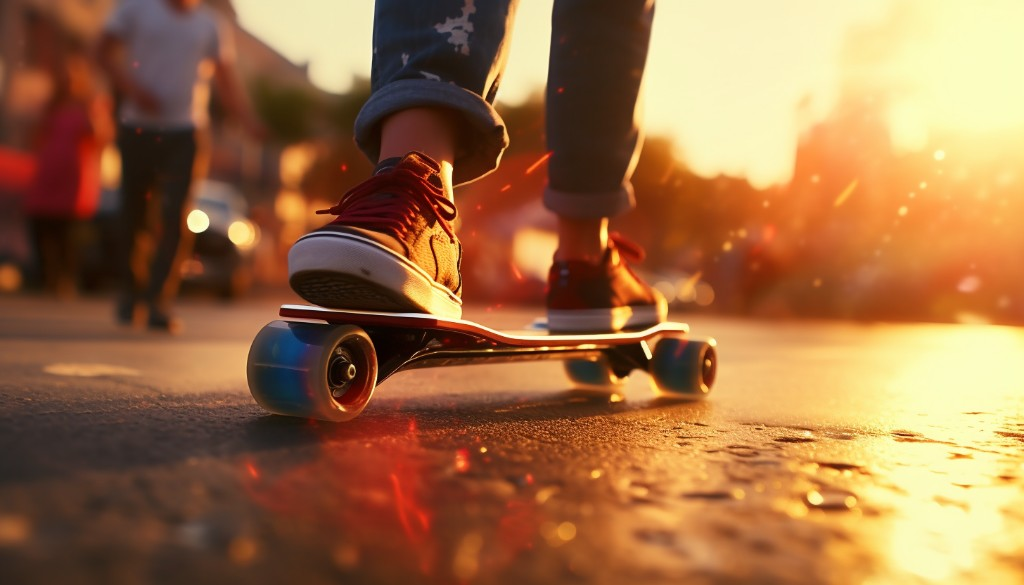
Falling Gracefully: How to Minimize Injuries
Have you ever wondered how professional skateboarders manage to fall off their boards, brush themselves off and get back on like nothing happened? The secret behind this seemingly superhuman ability is understanding the art of falling. When we’re kids learning how to ride a regular skateboard, the occasional tumble is part and parcel of the process. If you’re unable to prevent a skateboarding accident, then knowing how to fall correctly is a crucial skill that will minimize your risk of injury.
The Importance of Knowing How to Fall
Falling can be inevitable, especially when you’re learning new tricks or navigating tricky terrains. It’s not about if you fall, but when and how you do it. Even seasoned professionals take a spill every now and then, so it’s vital for everyone to learn how to fall correctly.
By mastering the art of falling, you can significantly reduce your chances of serious injury. This skill becomes even more critical when you ride an electric skateboard, as these models often reach higher speeds than their traditional counterparts.
Techniques for Safe Falling
Here are some techniques that can help you minimize injuries when taking a tumble from your regular skateboard:
- Always try to roll when you fall. This way, the impact can be distributed over a larger area, reducing the chance of serious injury.
- Try to keep your body loose and relaxed. A stiff body can lead to more injury as it’s less able to absorb impact.
- Avoid falling on outstretched hands. This can lead to wrist fractures or dislocations. Instead, try to fall onto fleshy parts of your body like your thighs, buttocks or shoulder.
Advanced Electric Skateboarding Techniques
As you become comfortable with the basics of electric skateboarding, it might be time to start exploring some advanced techniques. These methods can not only enhance your skills but also add an exciting element of challenge and fun to your rides.
Mastering the Kick Push
Despite having a motor, sometimes you might find yourself in need of an extra push – literally. The kick push technique can be handy in situations like these. It involves pushing off the ground with one foot while the other remains on the board, helping you gain some momentum or maintain speed.
Learning to Ride Fast
One thrill that electric skateboarding provides is the ability to cruise at higher speeds. While this can be exhilarating, it also requires precision and balance. A useful tip when riding fast is to lower your center of gravity by bending your knees slightly and leaning forward a little. This gives you more stability and control over the board.
Doing Tricks
Performing tricks on an electric skateboard might seem daunting at first, but with practice, it’s definitely achievable. Start with something simple like a tic-tac, which involves shifting your weight on the board to move it from side to side without pushing off the ground. From there, you can work your way up to more complex tricks.
Remember, regardless of whether you’re practicing a safe fall or trying out an advanced trick, patience and practice are key. Each spill from your regular skateboard is an opportunity to learn and perfect your falling technique while every successful trick is a testament to your dedication. By integrating these skills and techniques into your electric skateboarding repertoire, not only will you become a safer rider but also a more accomplished one.
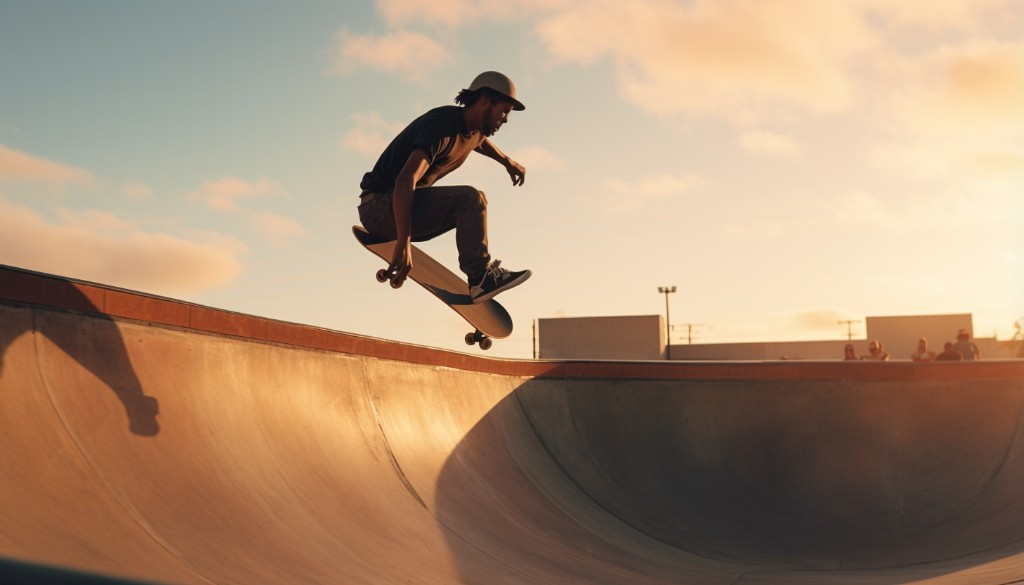
Essential Gear for Electric Skateboarding
As exhilarating as it may be, electric skateboarding is a high-speed sport that could pose significant risks if not approached with due caution. Therefore, investing in the right safety gear is an absolute essential. Here are some crucial safety tips to ensure you stay safe while riding your electric skateboard.
One of the first pieces of safety gear you would need is a sturdy helmet. It’s the one piece of equipment that stands between you and a debilitating head injury in the event of a fall or collision. Make sure your helmet is certified, fits well and is comfortable enough for prolonged wear.
Alongside a helmet, knee pads are another critical piece of safety gear. Falls are pretty much inevitable when you’re learning to skateboard or trying out new tricks. A solid pair of knee pads can save you from painful scrapes and bruises, not to mention more serious injuries.
Now, let’s talk about elbow pads, a must-have for any electric board enthusiast. Elbow pads protect one of the most sensitive parts of your body from injury. It’s not just about protecting your bones; a well-placed elbow pad can also save you from severe skin abrasions.
Don’t forget about wrist guards. They may seem insignificant, but they play a crucial role in preventing sprains and fractures. Remember, your instinct when you fall is to put your hands out to break your fall. Wrist guards give you added support and prevent your wrists from bearing the full brunt of your weight.
Finally, for those wanting additional protection, some brands offer padded shorts, jackets and back protectors to provide you top-level skateboarding safety and peace of mind.
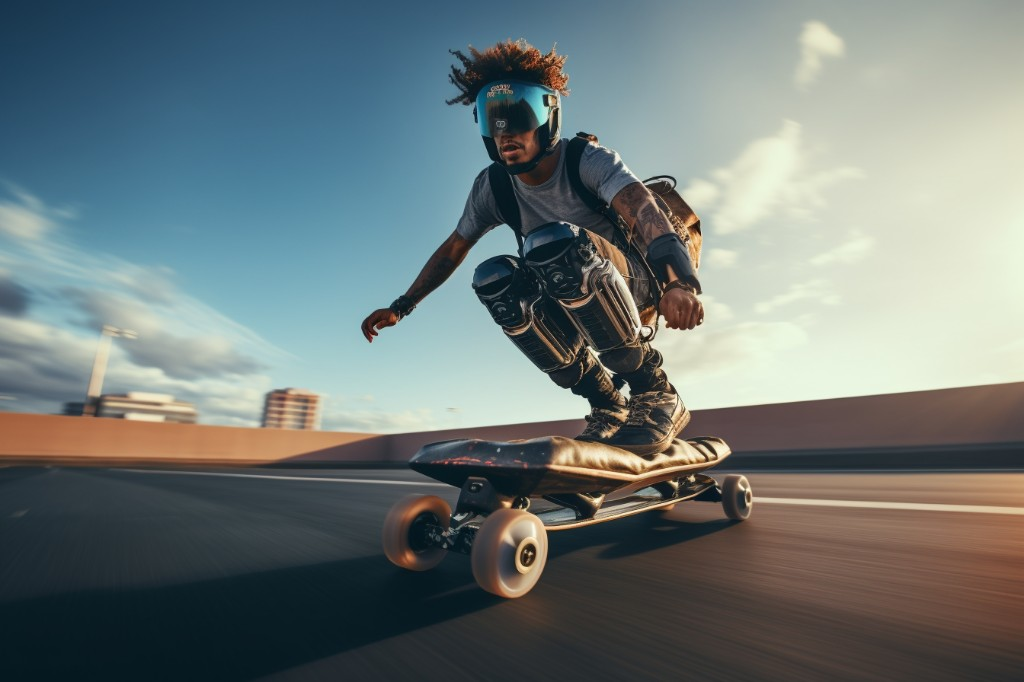
Choosing the Right Electric Skateboard for Your Riding Style
Choosing the best electric skateboard is not as straightforward as it might seem, and it can significantly impact your riding experience. There are a few factors to consider when deciding which board to buy.
Firstly, the rider’s weight is a significant consideration when choosing an electric skateboard. The heavier the rider, the more power the board needs to provide an enjoyable ride.
Secondly, consider the terrain type where you’ll be primarily using your board. For example, if you’ll be riding on hilly terrain or rough surfaces frequently, you’d need a board with a strong motor and durable wheels.
Next, consider the motor power. A high-powered motor will allow for higher speeds and better climbing ability but may drain battery life faster. On the other hand, a lower-powered motor may be sufficient for casual cruising and offers better battery life.
Now let’s touch on a couple of specific brand recommendations: the Exway Flex Riot and Wowgo 3E.
The Exway Flex-Riot is a suitable choice for those looking to amp up their speed and agility on their rides. This skateboard offers significant power and flexibility, adapting well to various terrains while offering a smooth ride.
On the other hand, the Wowgo 3E is renowned for its stability and ease of use, making it an excellent choice for beginners or those who prefer a relaxed ride.

In essence, choosing the right electric skateboard requires considering your personal riding style, skill level, and regular terrain type. By taking these factors into account and following our electric skateboard buying checklist, you’ll be able to find an electric skateboard that provides an enjoyable and safe riding experience.
Closing Thoughts
Embarking on the journey of mastering electric skateboarding is an exhilarating adventure, beginning with the critical step of discovering your footedness. The right posture is a fundamental aspect of this journey, which when perfected, complements your carve composition; the correct skateboard stance and foot placement are pivotal to enhancing control and stability.
To truly become an adept skateboarder, mastering the art of braking and turning is essential. Familiarizing oneself with various electric skateboard types and understanding their settings, is also instrumental in nurturing your proficiency. As with anything, practice makes perfect, so get out there and practice the various styles and techniques to optimize your overall skateboarding experience.
Frequently Asked Questions
What is the best riding style for beginners?
For beginners, the best riding style is usually the cruising or carving style. This style focuses on maintaining balance and control while moving at a comfortable pace, making it a great starting point for those new to electric skateboarding.
How can I improve my electric skateboard riding skills?
Improving your electric skateboard riding skills involves mastering basic techniques such as adopting the right stance, perfecting your foot placement, and learning how to brake and turn efficiently. Once comfortable with these, you can start practicing more advanced techniques and maneuvers.
Are there any legal restrictions while riding an electric skateboard?
Yes, legal restrictions on riding an electric skateboard vary depending on local laws and regulations. Some areas may require riders to wear safety gear, limit the speed at which they can ride, or even restrict where they can use their electric skateboards. It’s important to familiarize yourself with these regulations in your area.
What factors should I consider while choosing my electric skateboard?
When choosing an electric skateboard, factors to consider include your skill level, the board’s speed and range, wheel type and size, board weight and portability, and the type of terrain you’ll be riding on. Your personal riding style also plays a significant role in this decision.
How can I maintain my electric skateboard properly?
Proper maintenance of your electric skateboard involves regularly checking and adjusting the trucks, cleaning and replacing the wheels as needed, and ensuring the battery is properly cared for. Regular inspection of your board for any potential issues is also a crucial part of maintenance.
